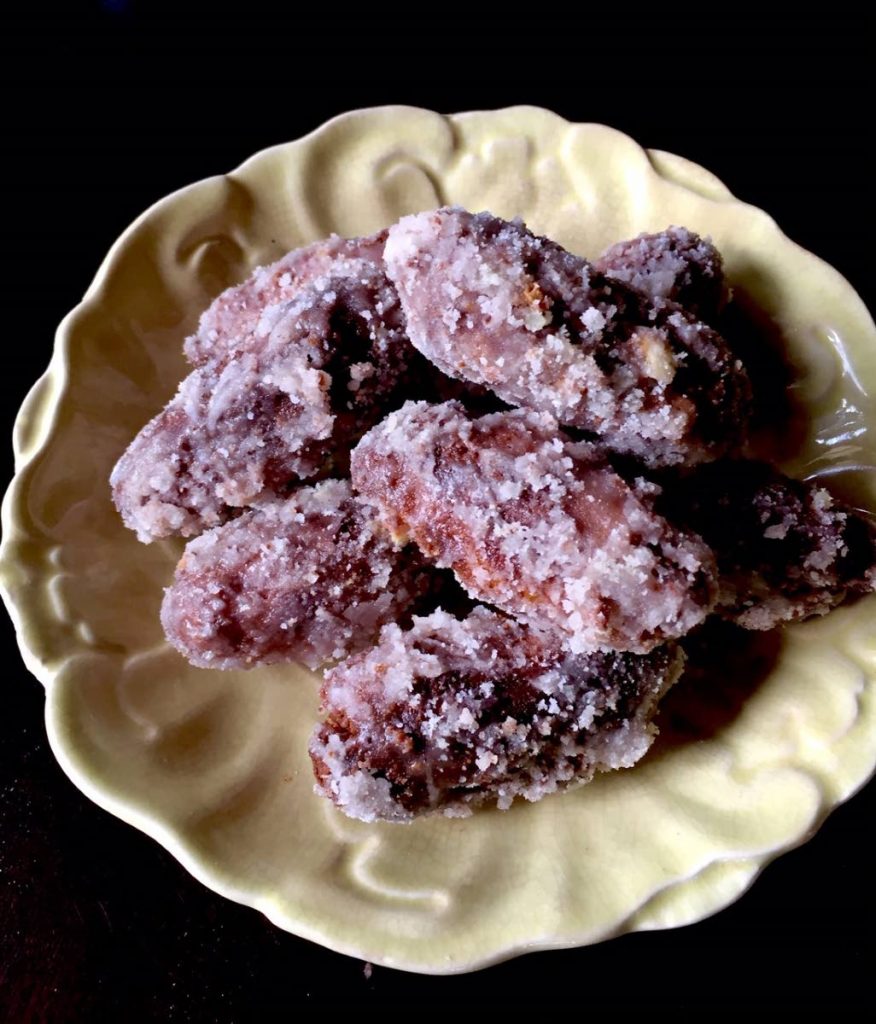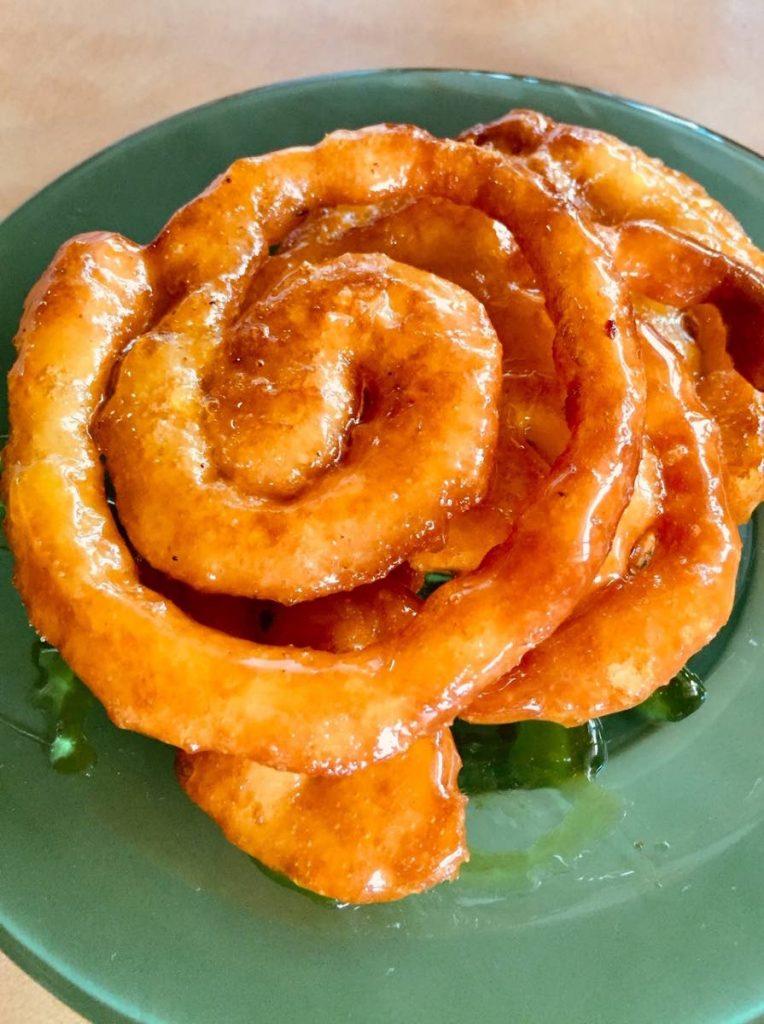Indian sweets

ON Thursday we celebrate Indian Arrival Day commemorating the arrival of the first Indian indentured labourers from India to Trinidad, in May 1845, on the ship Fatel Razack. The Fatel Razack brought Indians to work on the estates in order to to assist in the economic development of Trinidad. A long and arduous journey, there was no turning back. They came, they settled and brought with them their culture, religion and food which is woven into our history.
They could not bring all that they needed, some say that they brought with them spices, rice and two types of animals. The water buffalo for hard labour and a type of humped cattle that provided milk for their beloved yoghurt and butter which was made into ghee.
The yoghurt, and ghee together with the sugar from the estates were used to lovingly make sweets from their homeland. These sweets as we know them today are just a minute representation of those from the motherland. The most popular here are kurma, gulab jamoon, barfi (burfi), coconut barfi, peera, ladoo, jelabi, sawine, and goolgoolah. Much of these items are true to their name in India, except for gulab jamoon which translates to the round, spongy, syrup soaked sweet from India.
I remember growing up using the name methai when referring to kurma, methai is the Hindi translation of sweet. I also remember when my grandmother came to visit, when asked what she wanted for dinner, she would always reply: sada and talkari. Talkari as we know it is a spicy vegetable mash down, cooked to a mushy stage with a heavy handed amount to garlic and pepper. The original word tarkari on the other hand is a spicy vegetable curry originating from the Indian subcontinent, notably Bangladesh, India, Pakistan and Nepal. The resemblance is there the terminology somewhat changed.
Some localised Hindi terms were used in my home when referring to kitchen utensils like, tawa (baking stone ), bilna (rolling pin), and puchara (pieces of cotton, attached to a stick used to brush oil on roti when cooking). Here are some other cooking utensils with the localised Hindu names, are any of them familiar to you?
chauki – a round wooden board with about 3-inch legs, used to roll roti.
dabla – the flat wooden spoon used to flip roti.
chulah – fireside cooking
pulkni – long hollow pipe, about one-inch in diameter used to blow air into the fire to help ignite the chulah.
dhal-gutni –swizzle stick used for dhal.
sil and lorha – the lorha is a hand stone grinder used to grind spices on the flat surface of the stone sil.
jharu – cocoyea broom
My favourite Indian sweet remains gulab jamoon, but only when they are home-made with butter, fried to a dark brown colour and then covered in all that sugary goodness. A crisp, sweet exterior with a melt-in-your-mouth cakey texture on the inside. It’s a bit challenging to make, everyone with their own version. After failing quite a few times with many different recipes, I finally made an adaptation that gives me satisfaction.
Another interesting sweet and very popular in India is jelabi, where it is sometimes eaten for breakfast. Our local version is made with flour and water which is fermented to a sour flavour, (2 days), then piped into hot oil, fried and then covered in a sugar syrup. Crisp, sweet and tangy. Happy Indian Arrival day to all!
Gulab jamoon

2 cups flour
1 tsp cinnamon
1 tsp ground cardamom
1/2 cup milk powder
1 cup butter, frozen
¼ cup water
Oil for frying
Place flour, spices and milk powder into a bowl of a food processor, add butter and pulse into flour, add water and knead to a smooth and stiff dough.
Pinch off about two-inch pieces of dough and roll to a ball, taper the ends until you have and oblong shape, then roll the ends further almost to a point.
Heat oil in a deep pot or wok and carefully deep fry until dark golden brown, use a medium heat here or your dough will burn.
Drain and coat with sugar syrup (paag) turning to coat until sugar crystallises.
Sugar syrup (paag)
2 cups granulated sugar
¼ cup water
Powdered cinnamon and ginger
Boil sugar in water until thick, and very bubbly, when sugar spins a thread boil for another two minutes, then pour hot and bubbly onto gulab jamoons.
Jelabi

Adding some yoghurt to the mixture accelerates the fermentation process.
1 cup all -purpose flour
¼ cup yoghurt
1/2 cup water
Oil to fry
Syrup
1 cups granulated sugar
1/3 cup water
1 tsp orange peel grated or orange flower water
Combine flour with yoghurt and water to make a thick but pourable batter.
Cover and set aside for about 12 hours, this allows the batter to take on an almost sourdough flavour.
Combine ingredients for syrup, boil for 5 minutes and then cool.
Heat oil in a deep fryer and pour batter from a funnel or jug in a thin stream into hot oil to form a pattern of overlapping swirls to about a 4 inch diameter.
Fry until golden, turn and finish frying on other side.
Drain on paper towels then place in sugar syrup.
Serves 4
Wendy’s Cooking classes
Roti: June 8, 9 am -12 pm
Holiday Kids and Teen Camps registration open
357-0927


Comments
"Indian sweets"